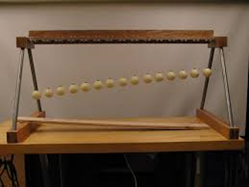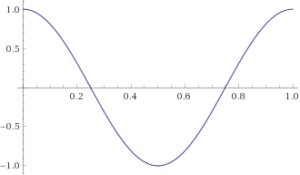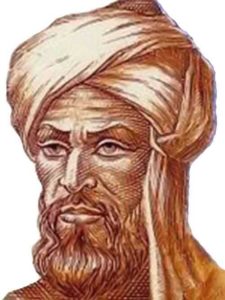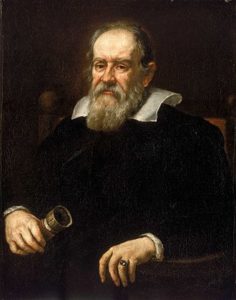Pendulum Wave
Tasks
|
||||||
MathsThe position of a pendulum, during one full swing, looks like this: Longer pendulums take longer to complete a cycle, which is why the pendulums gradually move out of synch. However, at various times, parts of their individual cycles start to coincide. For example, halfway through the dance the pendulums fall into two groups, at opposite amplitudes. Or, a quarter though the dance the pendulums fall into four groups, at different quarter-phases of their cycle. Sometimes the pendulums are at seemingly unrelated points in their cycles and so the pattern looks chaotic. In 35 seconds, each pendulum has completed a full number of swings (from 31 to 45). At which point all the pendulums are back to where they started and the dance is complete. |
||||||
HistoryAlthough pendulums have been used for thousands of years, Italian scientist Galileo Galilei was the first to study the properties of pendulums around 1602. Galileo discovered that the period of a pendulum does not depend on the weight, but does depend on the square-root of its length, and conceived of the idea for using pendulums for time-keeping. Pendulum clocks were the most accurate method of timekeeping for the next 300 years. |
||||||
People |
||||||
ApplicationsThe mathematics of pendulums can be found in anything with a simple back and forth motion, such as waves going up and down, or when people play on a swing. Pendulums are often found in clocks, where they were most accurate way to keep time for 300 years. They are also used in scientific devices such as those that measure acceleration or earthquake activity. |
||||||
Maths at HomeYou can make a pendulum at home with some string, and something like plasticine as the weight. It is best if you attach the top of the pendulum to some kind of hook. Investigate how changing the weight, the length of the string, or the angle of release affects the period. You may need a protractor. |




